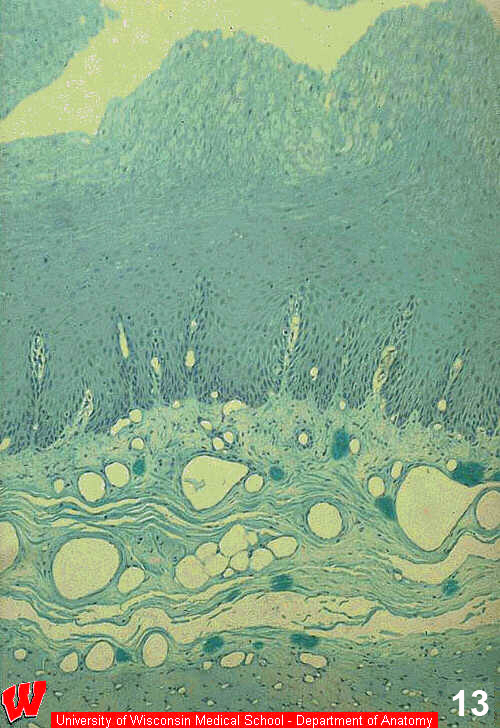
The epithelium lining the esophagus appears variable in thickness (HA13). This folding is due to the contraction of underlying smooth muscle. The name of this tissue is mucosal (moist surface, non-keratinized), stratified, squamous epithelium. (Whenever you see a stratified squamous epithelium, please indicate whether it is mucosal or keratinized.) In this mucosal type, notice that the surface cells contain nuclei. In keratinized epithelia, the surface cells lack nuclei (HA15). At the base of this epithelium, ridges of the epithelium interdigitate with papillae of the lamina propria. This arrangement both strengthens the attachment between the two tissues, and increases the surface area for diffusion of nutrients from blood vessels (bv) in the underlying connective tissue into such a highly stratified epithelium. The stem cells that regenerate this epithelium are found in the basal layer.


